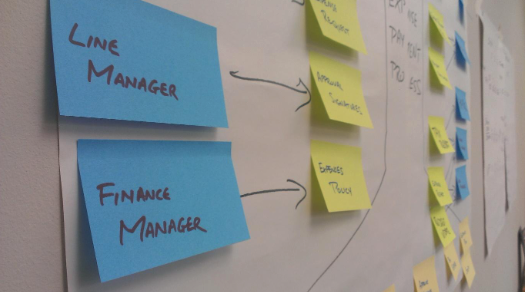- Admin User
- June 28th, 2023
In today’s fast-paced business environment, efficient workflows are key to staying competitive and maximising productivity. Process mapping, also known as process flowcharting, has become an indispensable technique for analysing and improving internal office processes. In this article, we will delve into the various applications of process mapping in optimising office workflows and explore how leveraging the power of process mapping can enhance productivity. Discover the transformative potential of process mapping in driving efficiency and success in your office.
Streamlining Administrative Processes:
Process mapping holds tremendous value in streamlining administrative processes within the office. By employing process mapping techniques to visualise tasks, approvals, and handoffs in administrative functions like document management, expense processing, or procurement, businesses can identify bottlenecks and redundancies. This insight empowers organizations to restructure workflows, eliminate unnecessary steps, and automate repetitive tasks, resulting in reduced administrative burden and substantial time and resource savings.
Enhancing Communication and Collaboration:
Effective communication and collaboration are critical to an optimised office environment. Process mapping provides a visual representation of information flow and task assignments across departments and teams. By uncovering communication gaps and delays, businesses can implement strategies to enhance collaboration, transparency, and alignment. This fosters improved coordination, expedited decision-making, and strengthened teamwork, ultimately driving heightened efficiency and productivity within the office.
Improving Onboarding and Training:
Process mapping significantly aids in streamlining onboarding and training processes for new employees. By visually mapping out the steps involved in various office processes, businesses can create comprehensive training materials and standard operating procedures (SOPs). These resources facilitate efficient learning, reducing errors and enabling new hires to seamlessly integrate into their roles. With process mapping as a guide, new employees can quickly become productive contributors, optimizing office efficiency.
Identifying and Eliminating Inefficiencies:
Process mapping serves as a powerful tool for identifying and eliminating inefficiencies that hinder office productivity. By visually representing workflows, organisations can pinpoint areas where tasks are delayed, duplicated, or lost in the system. This analysis enables businesses to redesign processes, eliminate redundant steps, and implement automation tools to streamline operations. By eradicating inefficiencies, organizations optimise resource allocation, reduce costs, and elevate overall office performance.
Facilitating Change Management:
Change is an inherent part of the modern business landscape. Process mapping plays a pivotal role in facilitating change management within the office environment. When introducing new systems, technologies, or organisational structures, process mapping visually illustrates how these changes impact existing workflows. By mapping out before-and-after scenarios, businesses can identify potential challenges, plan for smooth transitions, and minimize disruption. Proactive change management, guided by process mapping, cultivates adaptability and ensures optimal office processes amidst periods of transformation.
Conclusion:
Process mapping is an invaluable tool for optimising office workflows and boosting productivity. By streamlining administrative processes, enhancing communication and collaboration, improving onboarding and training, identifying and eliminating inefficiencies, and facilitating change management, process mapping becomes a game-changer in the office environment. Embrace the potential of process mapping to unlock new levels of efficiency, streamline operations, and drive productivity gains. With strategic process mapping, your office can thrive amidst evolving business demands, securing a competitive edge.

